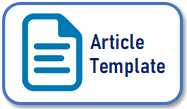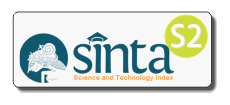Global Financial Crisis and Islamic Capital Market Integration among 5-ASEAN Countries
DOI:
https://doi.org/10.14421/grieb.2015.023-04Keywords:
Islamic Capital Market, Integration, Asean Economic Community, Diversification, ArbitrageAbstract
Islamic Capital Market is important part of Financial System in ASEAN countries especially in the context of AEC. The objective of this paper is to investigate interconnection long run equilibrium of Islamic Capital Market in ASEAN Countries. Using daily closing price for from September 2007 to October 2012, this study examine five Islamic Capital markets in ASEAN namely Indonesia, Malaysia, Philippines, Singapore and Thailand. This study examines on Integration among these Islamic Capital markets by relies a simple correlation test, Granger causality test and co-integration test using error correction model. This research documents some interesting finding. First, Using Johansen estimation technique, there is co-integration between the considered Islamic indices namely; Indonesia, Malaysia, Philippines, Singapore and Thailand. Second, Since the co-integration exists, granger causality test shows that there is three bi-directional causalities namely; between Malaysia Islamic Capital Market and Singapore Islamic Capital Market; between Thailand Islamic Capital Market and Singapore Islamic Capital Market; and between Singapore Islamic Capital Market and Philippines Islamic Capital Market. However, there is a unidirectional between Indonesia Islamic Market (MCIINA) and Malaysia Islamic Market (MCIMY), MCIINA and Philippines Islamic Market (MCIPhil), MCIINA and Thailand Islamic Market (MCITHAI), it implies that MCIINA affects MCIMY, MCIPhil, and MCIThai but not vice versa. Third, based on VECM suggest that all Islamic indexes are inter-related in the long run that can be explained due to the similarity of structure bring about by its stock as required by shariah in the process stock screening.Downloads
 Abstract viewed: 1590 times
|
Abstract viewed: 1590 times
|
 PDF downloaded = 1090 times
PDF downloaded = 1090 times
References
Al-Ghazzali, A. D. (1937). Al-Mustasfa fi 'Ilm al-Usul (Cairo: Maktabah al-Tijariyyah al-Kubra).
Cotter, John (2004),”International Equity Market Integration in a Small Open Economy:Ireland January 1990 – December 2000”, International Review of Financial Analysis,13, pp. 669-685.
Edison, H.J., R. Levine, L. Ricci, T. Slok (2002) International Financial Integration and Economic Growth, Journal of International Money and Finance, No.21., pp. 749-776.
Engle, R.F., and C.W.J. Granger (1987), “Co-Integration, error correction: Representation, estimation and testing”, Econometrica55:1251-1276.
Hussin, Mohd Yahya Mohd (2013), The Integration Of Islamic Stock Markets: Does A Problem For Investors?, Labuan e-Journal of Muamalat and Society, Vol. 7, pp. 17-27
Iqbal, M. (2000).Islamic economic institutions and the elimination of poverty. UK: The Islamic Foundation.
Janor, Hawati, Ruhani Ali (2007), Financial Integration of the ASEA-5 Markets: Financial Crisis Effects Based on Bivariate and Multivariate Cointegration Approach, Investment Management and Financial Innovations, Volume 4, Issue 4, p. 144-158.
Kabir, SarkarHumayun (2013) Are Islamic Stock Markets Integrated Globally? Evidence From Time Series Techniques. Australian Journal of Basic and Applied Sciences, 7(7): 702-720
Kassim, Salina H., (2010), Global Financial Crisis of Islamic Stock Markets in Developed and Developing Countries, VRF Series, No 451, 2010.
Kose, M.A., E.S. Prasad, M.E. Terrones (2003) Financial Integration and Macroeconomic Volatility, IMF Staff Papers No 50. pp. 119-42
Maghyereh, Aktham. (2006). Regional Integration of Capital markets in MENA Countries.Journal of Emerging MarketFinance.
Majid, M. Sabri et al. (2007), Dynamics Financial Linkage among Selected OIC Countries, Journal of Economic Cooperation 29,2, p.25-56.
Ong, Chong Tee (2005).‘Towards an Integrated ASEAN Capital Market’, at Bank Negara Conference; Expanding ASEAN-EU Economic Links: the Role of the Euro, 14 July 2005, Kuala Lumpur.
Plummer, Michael G.and Reid Click, (2003), Bond Market Development and Integration in ASEAN, Working Paper Series Vol. 2003.
Ragunathan, V. (1999), Financial Deregulation and Integration: An Australian Perspective Journal of Economics and Business, No 51. pp. 505-514.
Salman, A. S. (2008). Islamic capital market.Proceedings of International Conference Islamic Research and Training Institute..Ali, Syed Salman (2008). Islamic Capital Market.Proceedings of International Conference Islamic Research and Training Institute.
Shatibi, A. I. (1388). al-Muwafaqat fi Usul al-Shari’ah (Cairo:al-Maktabah al- Tijariyyah al-Kubra).
Siskawati, Eka (2011), Islamic Capital Market Interconnection: Evidence from Jakarta Islamic Index to the Regional Islamic Market and Global Islamic Market, Proceeding of the International Conference onSocial Science, Economics and Art 2011, pp 153-156
Suryanta, Barli, (2011), Capital Market Integration in ASEAN Countries: Special Investigation of Indonesian towards the Big Four, the Asian Journal of Technology Management Vol. 4 No. 2, p. 109-114
Swanson, P.E (1987), Capital Market Integration over the Past Decade: The Case of the US dollar Journal of International Money and Finance, No 6., pp. 215-225.
Zhang, X (2006) Specification Tests of International Asset Pricing Models, Journal of International Money and Finance, No 25. pp. 275-307.
Downloads
Issue
Section
License
Global Review of Islamic Economics and Business is licensed under a
Creative Commons Attribution-ShareAlike 4.0 International License



















